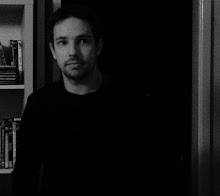Caillois thought that the adaptive mimicry of certain types of mantis "illustrated, sometimes hauntingly, the human desire to recover its original insensate condition, a desire comparable to the pantheistic idea of becoming one with nature, which is itself the common literary and philosophical translation of returning to prenatal unconscious." He would develop this idea in a later piece for Minotaure, "Mimicry and Legendary Psychaesthenia" (1937). Here Caillois provides a brief overview of animal mimicry: a caterpillar that can imitate the head of a snake, insects with wings adorned with "eyes" which supposedly startle predators, seaweed-like fish, mantises disguised as flowers. He finds accepted theories of mimicry wanting, and concludes that it is inefficient either as an offensive or defensive weapon, citing, for instance, the fact that most predators do not hunt by sight, as well as the case of the Phyllidae insects, which mimic leaves so convincingly they browse on each other. Instead, he turns to an unlikely source for an explanation: mimetic magic, and the principle of correspondence:
The law of magic, Things that have once touched each other stay united, corresponds to the principle of association by contiguity, just as the principle of association by similarity precisely corresponds to the attractio similium of magic: Like produces like. Hence, identical principles govern, on the one hand, the subjective association of ideas and, on the other, the objective association of phenomena; that is, on the one hand, the chance or supposedly chance links between ideas and, on the other, the causal links between phenomena.
Mimicry must be, Caillois argues, "a disorder of spatial perception" or lure of space, which he terms "legendary psychaesthenia." He compares it to the dissociation between mind and body in schizophrenics, for whom "space seems to constitute a will to devour." (Caillois would later write that he found these ideas far-fetched.)
In natural mimicry Caillois saw equivalents to human fashion, carnival theatre and ceremony, but denied that this projection was a case of anthropomorphism; rather it was
exactly the opposite. It should be realised that the point is not to explain certain puzzling facts observed in nature in terms of man. On the contrary, it is to explain man (governed by the laws of this same nature, to which he belongs in almost every respect) in terms of the more general behavioural forms found widespread in nature throughout most species. This attitude prompts one to greatly vary the principles of biological explanation and to assert that nature (which is no miser) pursues pleasure, luxury, exuberance, and vertigo just as much as survival.
In her introduction to The Writing of Stones, Marguerite Yourcenar describes Caillois' theories as "an inverted anthropomorphism in which man, instead of attributing his own emotions, sometimes condescendingly, to all other living beings, shares humbly, yet perhaps also with pride, in everything contained or innate in all three realms, animal, vegetable, and mineral."

























.jpg)


















